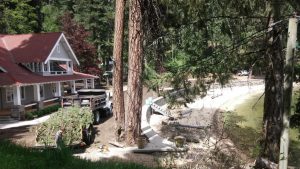What Are Tree Braces and Cables and What They Do

Tree braces and cables are not always something you see every day. If you live in an urban area, they could possibly be very important to the safety of surrounding trees, people, and property. Here, I will tell you just what tree braces and cables are. I will also tell you how and why you might need to use tree braces and cables on particular trees. Lastly, I will let you know who can tell you more about these systems.
What are tree braces and cables?
Tree braces and cables are just what they sound like. These devices are meant to give trees extra support so that they will not fall down or suffer damage due to weakness. Tree braces and cables come in a variety of types. The most common are stakes, cables that tether trees together, or braces that hold parts of trees together. Branches, parts of tree trunks, or the entire tree might need extra support in a variety of situations. While some systems, like guying, are recognized as not being safe for trees, others are perfectly safe.
Why and How to Brace or Cable
There are several reasons to use tree braces or cables for trees. Firstly, these systems may be used to prevent a healthy tree or group of healthy branches from falling. Secondly, cabling and bracing might be employed to keep a tree alive longer. Thirdly, any tree that poses a particularly dangerous hazard to people or property might be braced or cabled for extra strength. A local arborist or certified tree service can let you know if you need to brace or cable any of your trees. I personally offer this type of service in the Northern Idaho area, and we offer local Priest Lake tree removal.
Seeking Help
Understand that setting up a system of tree braces and cables is not something typically done by amateurs. Completing such jobs yourself can put you, the tree, property, and others at risk over the long term. In most cases, your best bet is to call an arborist or tree service to decide what type of cable or brace system your tree might need. To find a local arborist in your area, do a licensed arborist search, as found here. Next, you will want to sign a contract with either of these professionals that you ask for help. Hiring a professional assures you that the job is done right the first time and that the correct materials are used.
For more information, check out these references:
https://extension.tennessee.edu/publications/Documents/SP659.pdf
https://www.umass.edu/urbantree/factsheets/36cablingandbracing.html
